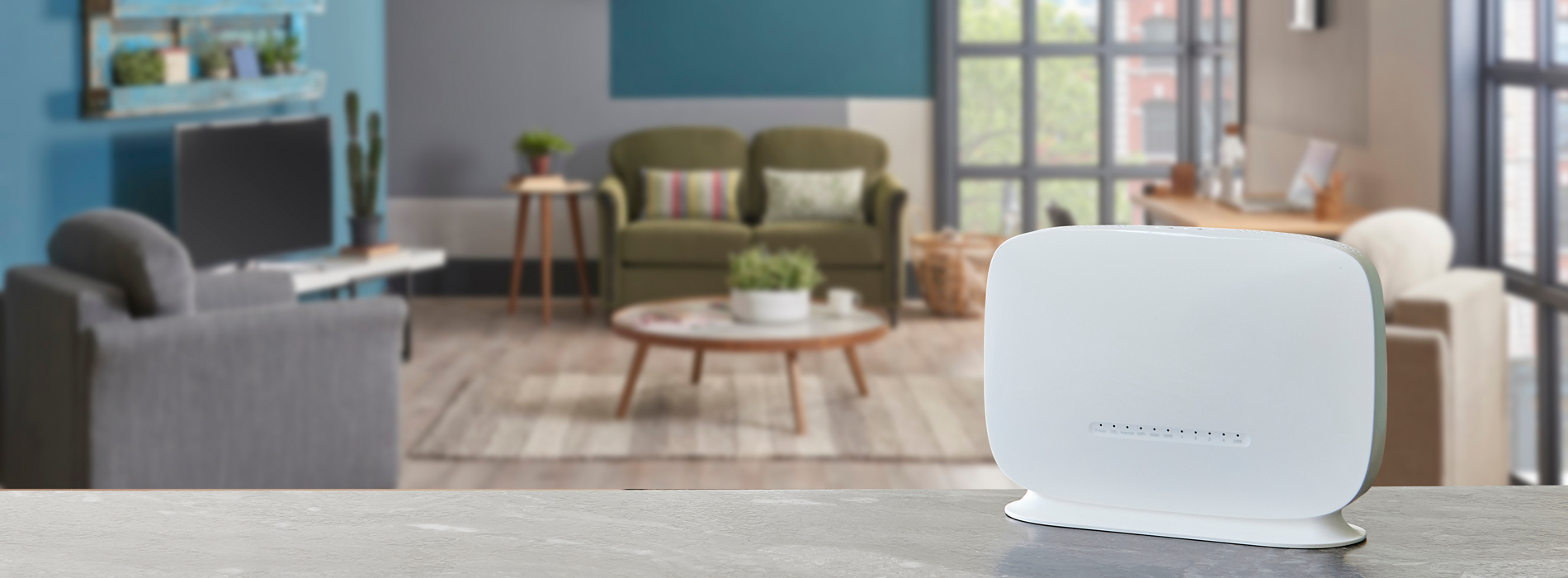Securing Your Home Network
In today’s digital age, a secure home network is essential to keep your devices and personal information safe from unauthorized access and cyber threats. With more activities being conducted online now than ever, evaluating the security of your network should be a regular process. That’s where Voyager comes in. Follow our simple but effective steps suggested below, to ensure your home Wi-Fi network is as secure as possible.
1. Change the Default Router Settings
Most routers come with default usernames and passwords, which can be easily guessed or potentially found online. Changing these to a strong, unique password is the first step in protecting your home network. Make sure to also change the network name (SSID) to something that doesn’t give away your router’s brand or model. To change your router password and Network name, simply enter your routers IP address in your browser, (which will often be 192.168.1.1), then log into the sign in pop up that appears with your router’s username and password.
Make sure you are at your home address and connected to your router via WiFi or Ethernet cable when trying to view your routers login page, or you won’t be able to access it. If you’re not sure what your router admin login details are, check the support section of your provider’s website or initial email, or ask their helpdesk team.
2. Use Strong, Unique Passwords
Your Wi-Fi password should be long, complex, and hard to guess. Avoid using common words or phrases and include a mix of upper- and lower-case letters, numbers, and special characters. This tip applies to all your passwords, not just your router. A strong, hard-to-guess password might be tougher to remember, but it’s also much harder for hackers to crack, keeping your accounts secure. Follow the instructions from Step 1 above to change your router password if needed!
3. Enable WPA3 or WPA2 Encryption
WPA stands for Wi-Fi Protected Access and is a series of security protocols designed to safeguard your Wi-Fi traffic and is the encryption that protects your data when connecting to a Wi-Fi network. Make sure your router is using WPA3 (the latest, most secure standard) or WPA2 if WPA3 isn’t available. Avoid older encryption methods like WEP, as they are much less secure.
You will be able to check your router WPA and enable the latest standards by following the instructions from Step 1. Once logged in, navigate to security settings and update as needed from there.
Note, changing your WPA settings may momentarily cause you to lose Wi-Fi access, so keep timing in mind when you change this setting so any important activities aren’t interrupted on your end.
4. Update Your Router’s Firmware Regularly
Router manufacturers release firmware updates to fix security vulnerabilities and improve performance. Check your router manufacturer’s website for updates regularly and install them to ensure your router is protected against the latest threats.
5. Disable Remote Management
Most routers have a remote management feature that allows users to access the router’s settings from anywhere. While convenient, this feature can be exploited by hackers. If you don’t need it, it’s best to turn it off. Follow the instructions from Step 1, but navigate to the “Remote Management” setting, and clear the “Turn Remote Management On” checkbox, and save your changes.
6. Use a Strong Network Firewall
A firewall acts as a barrier between your network and potential cyber threats. Consider upgrading your router to one that has an inbuilt firewall, although these can be expensive. If you’d rather keep your current router, you can also add extra layers of protection with security software on your devices.
7. Monitor Connected Devices Regularly
It’s a good habit to regularly check which devices are connected to your network. Most routers have a feature that lets you see a list of connected devices. Again, reference Step 1 for logging into your router management settings, and navigate to a section called “Attached Devices.” If you spot any unfamiliar devices, change your password immediately and update your network settings.
8. Educate Yourself on Phishing and Social Engineering
Even with a secure network, phishing attacks and social engineering tactics can still compromise your devices. Make sure everyone in your household knows how to spot suspicious links, emails, and messages to prevent unauthorized access through other means. If you’re ever unsure of any communication you’ve received, pause, review and reflect. Hackers want to catch you off-guard and rush you into action, so it’s best to take time to think, review the message by checking details and reflect on its nature with those you trust.
Securing your home network doesn’t have to be difficult. By following a few simple steps, you can protect your personal data and devices from unauthorized access and cyber threats. Stay vigilant and enjoy the peace of mind that comes with a secure Wi-Fi network.
Needing help getting up to speed with your home security?
If you have any doubts about your network’s security, reach out to your local telco expert at Voyager, because your security is too important to leave to chance.
Call us on 0800 4 SPEED or email us on [email protected].
